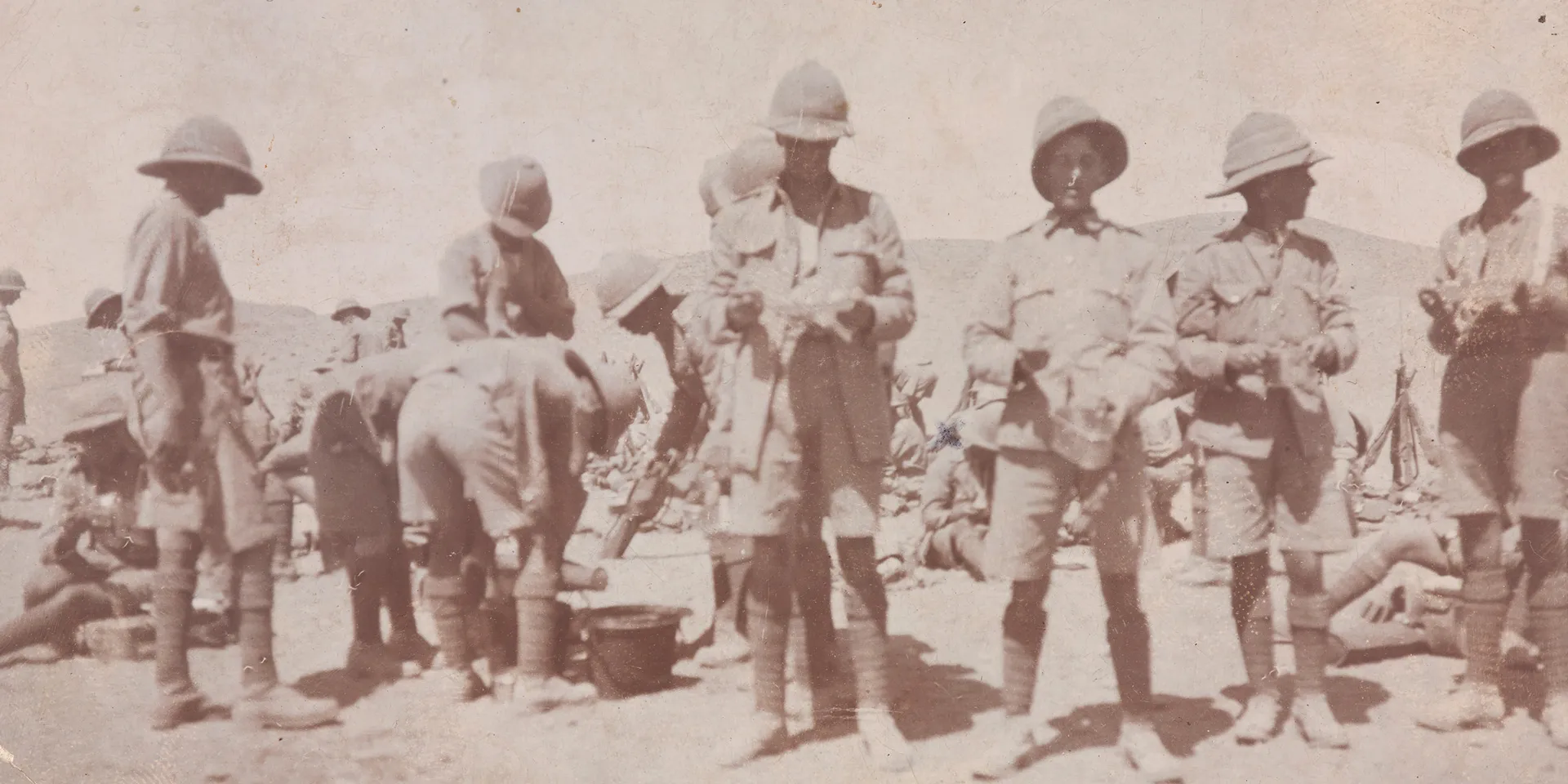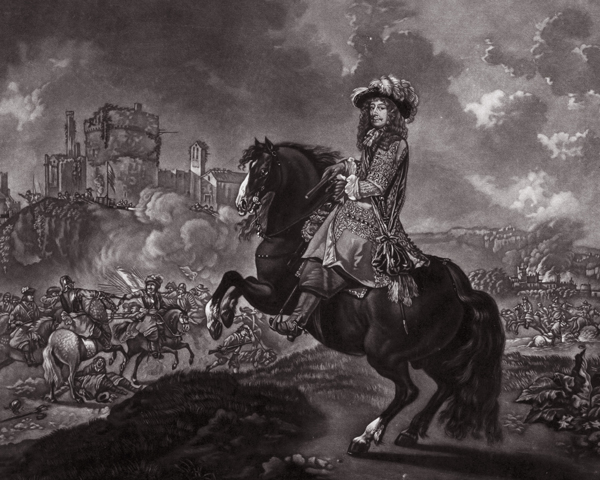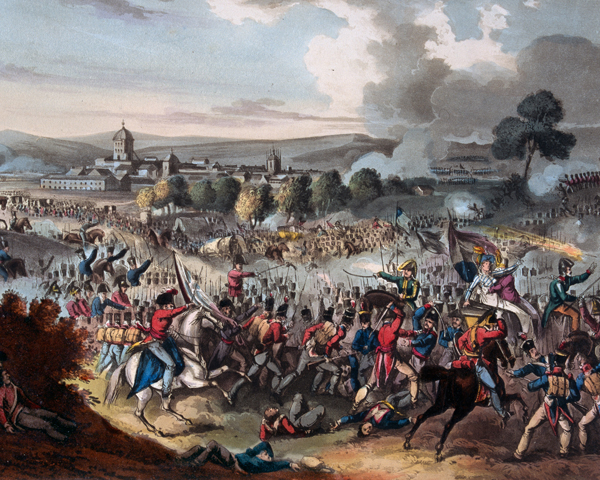Origins
During the 1670s, Henry Somerset, 3rd Marquess of Worcester (and later the Duke of Beaufort) raised a short-lived unit to defend the recently restored Stuart monarchy. Active in the Welsh Borders and the West Country, he was a natural choice to raise a new regiment in June 1685 to defend Bristol for King James II against the Duke of Monmouth’s rebellion.
This regiment defected to James’s son-in-law, William of Orange, when he landed in the West Country to seize the throne in the 'Glorious Revolution' of 1688. The following year, it was sent to fight against James’s forces in Ireland.
18th century
The regiment served in Flanders during the War of the Spanish Succession (1702-13), but had to be re-formed after its capture at Portalegre in Portugal (1704). Three years later, it sustained heavy losses during the defeat at Almanza.
Its deployment to North America in 1711 was no more successful, ending with the regiment being shipwrecked during the Walker Expedition against Quebec.
In 1715, it helped defeat the First Jacobite Rebellion, remaining in Britain until 1742, when it was sent to Europe during the War of the Austrian Succession (1740-48). It subsequently fought at Dettingen (1743), Fontenoy (1745) and Rocoux (1746). In 1751, it was assigned the number 11 in the infantry order of precedence.
In 1756, it formed a 2nd Battalion. But this became a separate unit, the 64th Regiment, in 1756.
In 1760, during the Seven Years War (1756-63), the 11th Foot returned to Germany, fighting at Warburg (1760), Kloster Kampen (1760) and Vellingshausen (1761), before garrisoning Minorca. It gained its first county association with North Devonshire in 1782.
It spent much of the next three decades in England, Ireland and the Mediterranean, defending Gibraltar in 1783 and sending detachments to serve as marines in the Battle of Cape St Vincent (1797). The regiment also fought in the 1798 raid on the port of Ostend and the 1800 capture of Malta, prior to six years in the West Indies.

A soldier of the 11th Regiment of Foot, c1742
Napoleonic Wars
In 1808, a new 2nd Battalion was raised. The following year, this was sent on the Walcheren Expedition to the Netherlands.
Meanwhile, 1st Battalion had deployed to the Peninsular War (1808-14), where it fought at Busaco (1810), Tarifa (1811) and Salamanca (1812). It was during the latter that it adopted the regimental march of ‘We’ve Lived and Loved Together’. En route to battle, the battalion unexpectedly found itself marching parallel to a French regiment. Rather than exchanging fire, the two sides saluted each other and proceeded on their way. This was the tune the 11th played as they parted company and marched into action.
The regiment went on to serve at Burgos (1812), Vittoria (1813), Sorauren (1813), the Pyrenees (1813), Nivelle (1813), Nive (1813), Orthes (1814) and Toulouse (1814), before briefly joining the occupation force in France.
19th century
In 1816, the regiment reverted to its single-battalion status. It was sent back to Portugal in 1826 during the succession crisis there. Then, in 1831, it sailed a troopship from Cardiff to Bristol to put down riots. In 1838, it undertook two years’ service in Canada, before sailing to New South Wales in Australia in 1845.
Thirteen years later, the 11th Foot formed yet another 2nd Battalion. In 1861, this was sent to South Africa, where it remained for nine years, barring a year in China and Japan in 1865. It was then sent to India in 1877, a posting that lasted 17 years and also included service in the Second Afghan War (1878-80) and Burma (1890-94).
1st Battalion spent most of the same period in Britain, before moving to Egypt in 1891 and India in 1892, where it fought in the Tirah Expedition (1897).

Officers and NCOs of the 2nd Devonshire Regiment at Wuutho, Burma, 1891
In 1881, its title changed to the Devonshire Regiment. It was also assigned Devon’s militia units, at the same time adopting their cap badge emblem of Exeter Castle - a reminder of their defence of the city during the English Civil War.
In 1895, 2nd Battalion sent a detachment to join the Composite Battalion fighting in the Fourth Ashanti War (1895-96). In 1899, both regular battalions deployed to the Boer War (1899-1902), where the regiment’s engagements included Colenso (1899), Wagon Hill (1900) and Spion Kop (1900). This was followed by time in India, Burma and Jersey for 1st Battalion, and Crete, Malta and Egypt for 2nd Battalion.
First World War
In August 1914, 1st Battalion deployed straight to the Western Front. It was joined there three months later by 2nd Battalion. Both were to remain there throughout the conflict, except for 1st Battalion’s five months in Italy from November 1917.
The regiment also raised 26 New Army, Territorial, Labour and Home Service battalions during the war. These served in Macedonia, Palestine, Mesopotamia and Egypt as well as on the Western Front.
2nd Battalion spent the post-war years in India and Aden, returning to England in 1927. 1st Battalion was stationed in Ireland for three years from 1919, but began a 15-year spell in China and India in 1927.

Members of 2nd Battalion The Devonshire Regiment on a meal break during service on the North West Frontier, India, c1919
Second World War
In 1938, 2nd Battalion arrived on Malta. It served there, as well as in Sicily (1943) and Italy (1943), for much of the Second World War (1939-45). In 1944, it landed in Normandy on D-Day and fought throughout the North West Europe campaign, including the Rhine crossings. It ended the war near Hamburg.
In May 1942, 1st Battalion was serving on Ceylon (now Sri Lanka) in the wake of a local uprising by native troops. It was then sent to Burma in July 1943.
The regiment also raised four Territorial battalions, most of which served with home defence establishments.
The 50th (Holding) Battalion, raised in 1940, was quickly renumbered the 12th Battalion and used for home defence until 1943, when it was trained for airborne operations. It landed in Normandy by glider in June 1944 and went on to take part in the Rhine crossings, fighting its way into Germany.
Post-war
In June 1948, the regiment was reduced to a single battalion and then spent three years serving during the Malayan Emergency (1948-60). In April 1953, it was sent to Kenya to serve during the Mau Mau Rising (1952-60).
Legacy
In May 1958, the Devonshire Regiment was amalgamated with the neighbouring Dorset Regiment to form The Devonshire and Dorset Regiment.
Regimental museums
The National Army Museum works with a network of Regimental and Corps Museums across the UK to help preserve and share the history and traditions of the Army and its soldiers.
Discover more about The Devonshire Regiment by visiting The Keep Military Museum in Dorchester.














